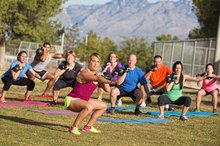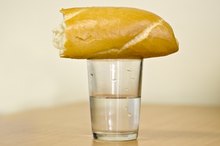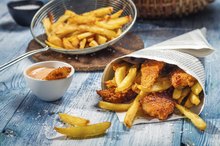The Figure Competition Diet Plan
The purpose of a figure competition diet is to cut as much body fat as possible while maintaining lean muscle mass. While there is no official figure competition diet, most competitors follow the same general rules of dieting and adjust these rules to fit their individual body type and training program. According to the American College of Sports Medicine, the minimum body fat that men should carry is around 6 percent; for women it’s roughly 10 percent 1. Maintaining a body fat lower than these percentages is unhealthy and can lead to serious health conditions.
Understanding Calories
A solid figure competition diet should be based on your current activity level and then divided into protein, carbohydrates and healthy fat percentages. In order to lose 1 lb. of body fat, you’ll have to burn around 3,500 calories more than you take in. Exercises can help you burn a large portion of this while your diet and metabolism take care of the rest. For example, if you burn around 3,000 calories daily through metabolic processes and exercise, you can eat around 2,000 to 2,200 calories per day. This is enough to create a deficit of around 800 calories and will give you enough fuel to push you through workouts. Over the course of a week you will have burned roughly 5,600 calories, which is about 1.5 lbs.
- A solid figure competition diet should be based on your current activity level and then divided into protein, carbohydrates and healthy fat percentages.
- of body fat, you’ll have to burn around 3,500 calories more than you take in.
Protein Intake
What Do Cross-Country People Have to Eat to Lose Weight?
Learn More
According to the National Strength and Conditioning Association, your protein intake should be around 30 to 40 percent during your cutting phase in order to help maintain muscle mass while you burn off as much body fat as possible before competition 2. Stick to proteins like eggs, turkey, fish and chicken. You should eat protein around five to six times per day to give your muscles a consistent pool of amino acids to call upon as needed.
Carbohydrate Intake
Carbohydrates need to be eaten with strict adherence to a few basic rules. All the carbohydrates you eat before a competition should contain little or no sodium. They need to be free of any artificial sweeteners, additives or preservatives. Carbohydrates should also be high in fiber to help promote regular bowel movements and help with the digestion of protein. Excellent sources include plant-based foods such as leafy green vegetables or legumes. Fruit can be included if you are not prone to insulin and blood sugar surges. The sugar in fruit may lead to extra fat accumulation for some people. If you are unsure, stick to vegetables. Oatmeal is a solid choice for complex carbohydrates. Try to get around 40 percent of your daily total calories from complex carbohydrates.
- Carbohydrates need to be eaten with strict adherence to a few basic rules.
- All the carbohydrates you eat before a competition should contain little or no sodium.
Healthy Fat Intake
Exercises to Slim Hips, Thighs & Stomach
Learn More
Healthy fats should not be avoided even during a cut. Healthy fats help with the production and development of hormones in your body. Many of these hormones promote muscle growth. Without adequate fat, you risk losing muscle definition, which can severely lessen your chances of winning a figure competition. Try to get at least 10 percent -- no more than 15 percent -- of your daily calories from sources like avocados, nuts, and olive oil. You can eat fat anytime throughout the day during a figure competition diet since it does not affect blood sugar as carbohydrates can.
- Healthy fats should not be avoided even during a cut.
- Healthy fats help with the production and development of hormones in your body.
Related Articles
References
- "ACSM’s Resources for the Personal Trainer”; American College of Sports Medicine; 2010
- “NSCA’s Guide to Sport and Exercise Nutrition”; National Strength and Conditioning Association; 2011
Writer Bio
Antonius Ortega is a 13-year veteran of the fitness industry and an athletic trainer certified by the American Council on Exercise. His articles on fitness, health and travel have appeared in newspapers such as the "The Hornet," "The Daily Bruin," and "Stars and Stripes." Ortega trains in Orange County.









